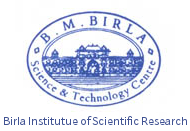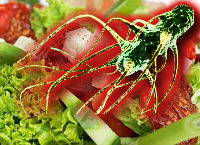Organism Details:
Shape and Size
�0�.�4�5� �¼�m� �� �0�.�6�5� �¼�m� �o�r� �0�.�8� �¼�m� �p�o�r�e�-�s�i�z�e� �/� �C�u�r�v�e�d� �a�n�d� �R�o�d�-�S�h�a�p�e�d�.
Genome Information
Campylobacter jejuni subsp. jejuni NCTC 11168 chromosome (GI:15791399) has a circular DNA chromosome of 1641481 bp. The genome structure of Campylobacter jejuni consists of 1,670 genes and 1,576 coding proteins, Pseudo Genes: 38, rRNAs: 9 ( 5S, 16S, 23S ), tRNAs: 43. The GC content of Campylobacter jejuni is about 30.5% and the percentage coding of the bacteria is about 93%.
Food Source
undercooked poultry, raw poultry , chicken juice , beef, beef livers, pork meat, raw milk, Mollusks, Dairy, fruits and vine stalk
Pathological Factor
Campylobacter is emerging globally and most of infections are believed to result from the ingestion of contaminated food, although the role of other, non-food exposures in the epidemiology of sporadic campylobacteriosis is still unknown while Cytolethal Distending Toxin (CDT) is widely distributed among Gram-negative bacteria and is the best characterized of the toxins produced by Campylobacter spp. It has been described as an important virulence factor of this pathogen.
CDT holotoxin, composed of three subunits encoded by the cdtA, cdtB and cdtC genes, causes eukaryotic cells to arrest in the G2/M phase of the cell cycle, preventing them from entering mitosis and consequently leading to cell death. Campylobacter bacteria is found in the intestines of many animals and some humans which lead to diarrheal infection mainly infect the ileum and jejunum in the small intestines rather than in the large intestines clinically suggested.
Although it is the leading cause of food-borne illness in the United States, Campylobacter can be easily treated by cooking or heating.Campylobacter main contaminate are water, milk or undercooked meat, especially chicken. Small amount of bacteria is enough to cause infection. Usually illness lasts 2 to 5 days, and most of these cases will disappear without treatment. However, 25% of these patients are likely to have a deleterious effect.3wq
Disease
Early stage symptom of Campylobacter infection is usually abnormal abdominal pain followed by bloody diarrhea. Other accompanying symptoms are headache, fever, muscle pain, and sometimes dehydration and vomiting may occur but not usually prominent, they may be severe enough to lead to death. Complication of Campylobacter infection may also contribute to mortality. For example, deaths have occurred in patients who also have cirrhosis, malnutrition, and lymphoma Campylobacter can also cause post-infection complications associated with acquired immune-mediated neuropathies considered as the most common cause of acute generalized paralysis in the western world such as Guillian Barré Syndrome or Miller Fischer Syndrome although a rare case. Campylobacter infection Symptoms associated with inflammation of the joints, eyes, or reproductive or urinary organs may lead to cause Reactive Arthritis.( symptoms appear 18 days after infection) and causes : Guillian-Barré syndrome Reactive Arthriti Gastroenteritis Infect Urinary tract.
Affected Body Organs
heart, central nervous system, gall bladder, urinary tract, blood stream.
|








